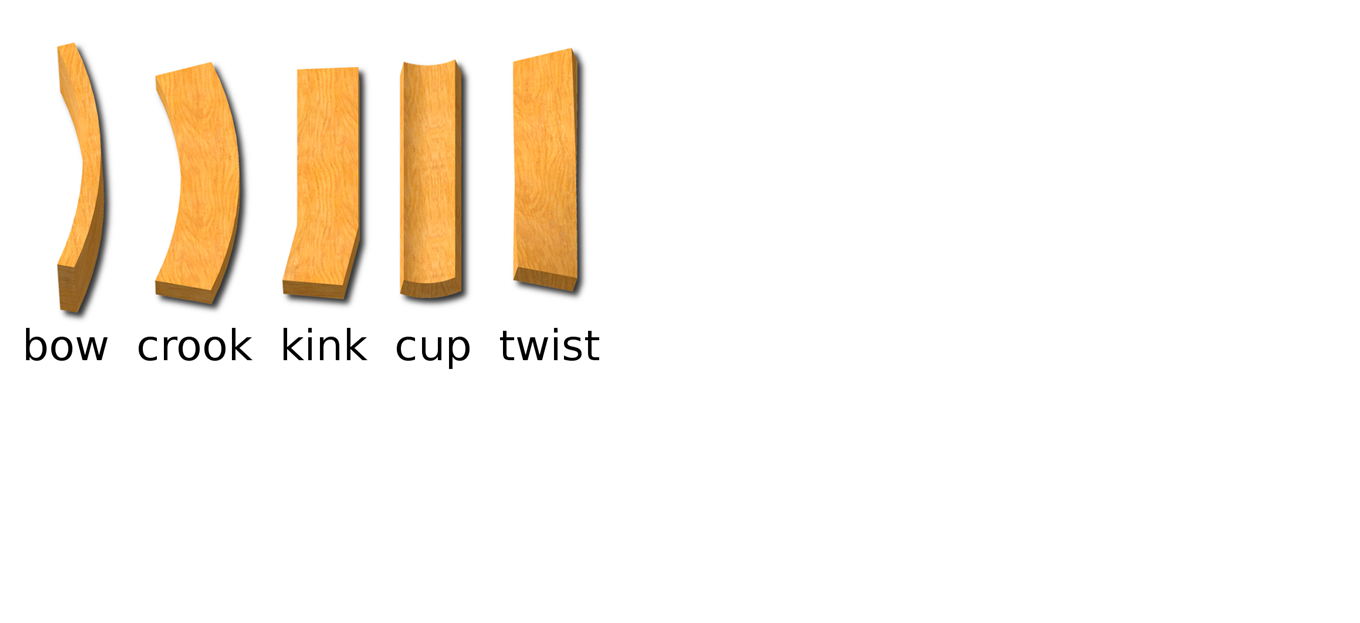

When you are a renowned manufacturer of wooden furniture, your customers buy from you because they trust your company. But what if you find your mailbox flooded with complaints and negative feedbacks about the plywood product being damaged or misshapen?
Yes, it definitely would be and you’ll at once start wondering, when and where did the problem happen? And, how can the misshapen wood be repaired?
We all have heard that moisture and humidity levels impact the shape and integrity of the plywood and it is called warped plywood. It is a serious problem for all wooden products, resulting in customer complaints and returns. Whereas, at some places, such as building materials, cracked or warped wood can affect the structural stability and it can turn out to be a dangerous issue.
Wood warping is a deformity in the plywood, which is caused when the moisture content of different layers of plywood (veneers) changes unevenly. When one part of a plywood dries faster than the other, the dried part shrinks causing stress, which in turn misshapen the plywood. So, a board that was designed to lie flat, has an uneven bend in it somewhere now. Warping is a type of product defect that affects imports of a wide variety of products, such as furniture, wood molding, etc.
Before knowing the different types of warping, it is significant to understand the causes which misshapen the plywood. The main reason for uneven swelling and shrinking in the plywood is the correlation between moisture content and the relative humidity of the surrounding air.
When the plywood has higher moisture content it shrinks, while it dries until it attains the equilibrium with relative humidity. Whereas on the other hand, plywood with relatively lower moisture content will swell, as it will absorb moisture from the surrounding air.
Factors that have an impact on the plywood warping are:

Plywood can warp in numerous ways, depending on the cause and the surroundings. Understanding these common ways in which plywood warps will help you to find out the potential problems occurring:
The process of making a plywood begins with cutting down of the trees, peeling veneers and then pressing them in the shape of rectangular sheets. As we know there is a significant amount of moisture content in the wood while it is cut down, it needs to be dried off for a particular amount of time. If it isn’t dried at the appropriate temperature and pressure, the remaining moisture in the plywood causes warping. At Chitwan Ply, we take special counter measures to prevent warping by appropriately drying the veneers before taking them into use.
1. Plywood grain and sawing techniques:
2. Proper techniques used in processing of veneers and during the manufacturing of the plywood can also influence warping. An understanding of these can help in limiting the risk of manufacturing warped plywood products.
3. Poor saw maintenance and variation in the working of saw speed also results in veneer thicknessat the ends than in the middle parts, which causes bow-type warping.
4. Proper storage techniques like all veneers placed in a stack should be of uniform thickness, especially when they are placed in the same layer. Stickers should lie flat and should be vertically aligned. Placing a heavy weight on a stack of the plywood pile can also be helpful in preventing cupping.
6. Storing the piece of plywood in a clean, cool, shaded and dry location also helps to prevent the plywood from absorbing significant amounts of moisture from the surrounding air.
7. Properly drying or curing the plywood to prevent warping, sealing the ends of plywood can also help in preventing warping.
Warping is a common problem for those working with this natural, complex and versatile material. Many manufacturers find it vital to limit the warping, especially when the plywood is being used to provide structural integrity or design aesthetics.
We, at Chitwan Ply, are very particular about the quality of the products we deliver. To ensure the quality, our products pass through a chain of strength, durability and warping tests. We ensure that the products are made from high-quality raw-material and pass through various quality testing procedures. Plywood warping not only damages the products but also deteriorate the life and beauty of the products. Our brand never hesitates to cross that extra mile to ensure the safety of your wood products.